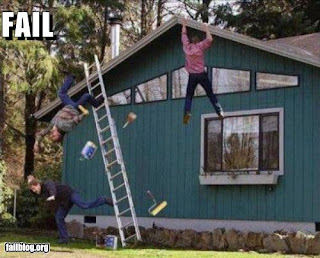
Myths:
1. It will increase foot speed
Mike Boyle wrote a fantastic article about foot speed and why it is an overused term that doesn’t have much value to improving athletics. Summing it up in one sentence, people who are fast and explosive don't have great foot speed, they have the ability to put force in the ground better than others.
3. It will improve footwork
Similar to point one, the idea of footwork can be argued. Watching Lee Taft coach and explain changing directions, multi direction speed is all about repositioning the feet to move in a different direction. Yes it is footwork in the end but much different than what a ladder drill will give us. That relies a lot on a external stimulus, being a ball, defender, etc. The ladder drills have a set pattern that the athlete must go through. They get better at it because of this but the correlation to game speed where an athlete must react to multiple factors that they do not think about where there feet should be. More to come in a future article about agility verses change of direction speed. Oh by the way, Lee is the uncle of Jimmer Fredette, BYU all american, and has worked with him since a kid. Coincidence? I think not.
3. Improves speed and agility
This is the big sell for the ladder. However, speed is about the force you put in the ground, as well as body composition. During a ladder drill the focus becomes placing your feet in a square rather than putting force into the ground to cover space. Agility is about your ability to start, stop, and start again. During ladder drills the movements are choreographed in a very small space, again with emphasis on foot placement in a target. In sport you often move 2-10 yards before you change direction with your focus on the ball, defender, out of bounds, etc. Not 2 feet without an external stimulus.
These are the three myths that many see as the advantages to performing ladder drills, when in reality they serve very little purpose. The ladder is a great tool but it needs a good coach to go with it. If you’re a coach, rethink its purpose and why you use it. If you’re an athlete, first know what your trying to improve and then implement a proper tool or drill. Don't use a steak knife to cut down a tree, and don't use a chainsaw to cut your steak.
The Other Side:
Anthony Hull is a friend that is doing very big things. He is inspired by music, art, film, and just lift in general. Over the past year Anthony has inspired by many through his online web series "Ant's World." He is coming back with more episodes and this last one was my favorite. He went to a special school in Harlem called Democracy Prep Charter, where they are doing some special things.......
"Ant's World" Episode 5 - Democracy Prep Charter School from anthony hull on Vimeo.
I want to share a couple blogs with you that I can't get enough from. They both feed quality information to many coaches, athletes, and parents.
First is Brian McCormick's new site Developyourbballiq.com. I wrote a post about our conversation and since he put together a great new website with all of his products and info. He writes a blog or 2 a week that really explains the process of learning and how to improve athletes. He has no bias and is just looking for the truth.
Next is Ben Bruno's blog. benbruno.blogspot.com. First of all Ben is one of the strongest pound for pound people I have known even though we have only met through keyboard. He does a great job of finding all the great articles of the week and putting them on one page. He also shows some great exercises that he and his boys do over at MBSC in Boston.





